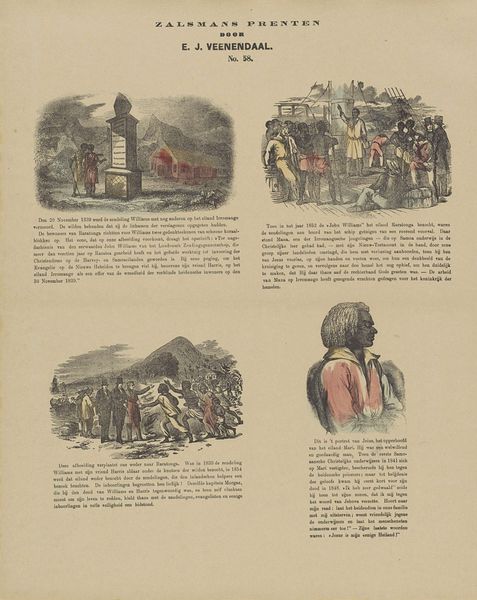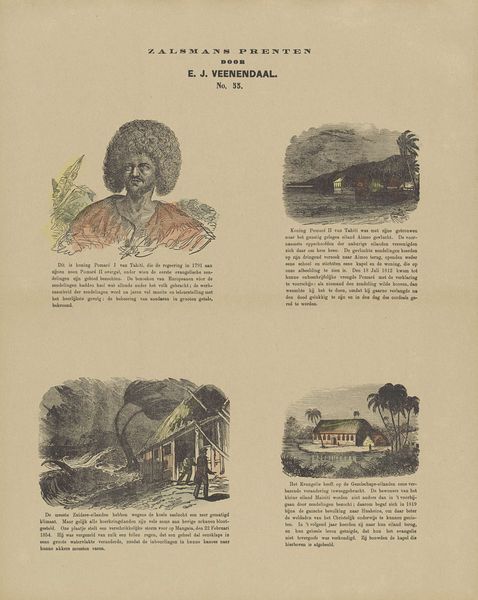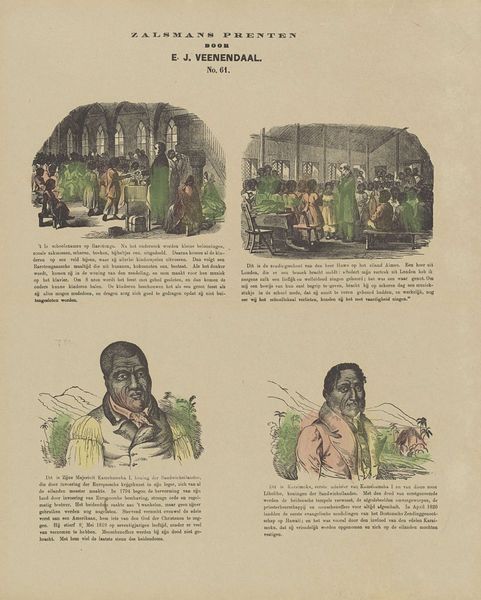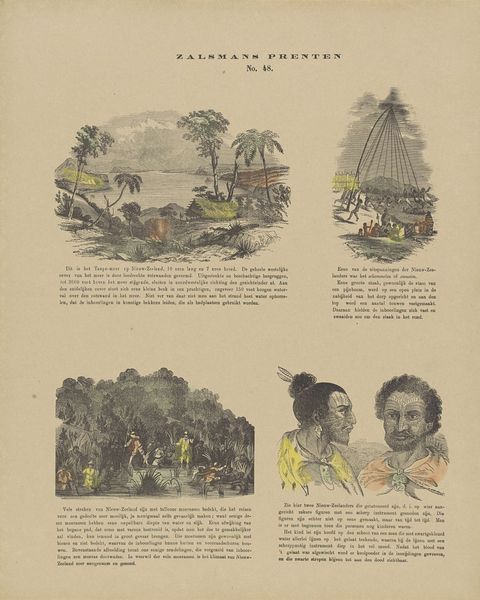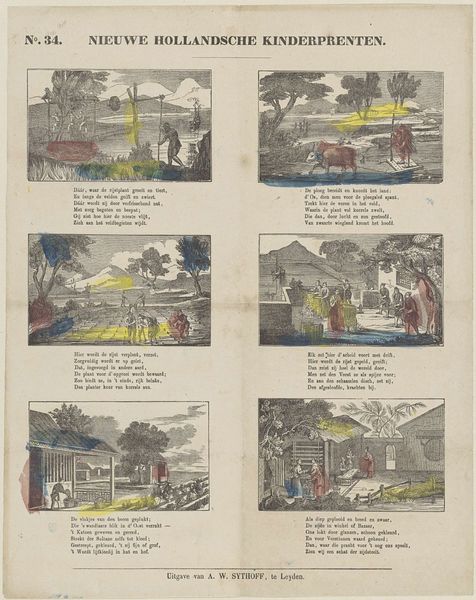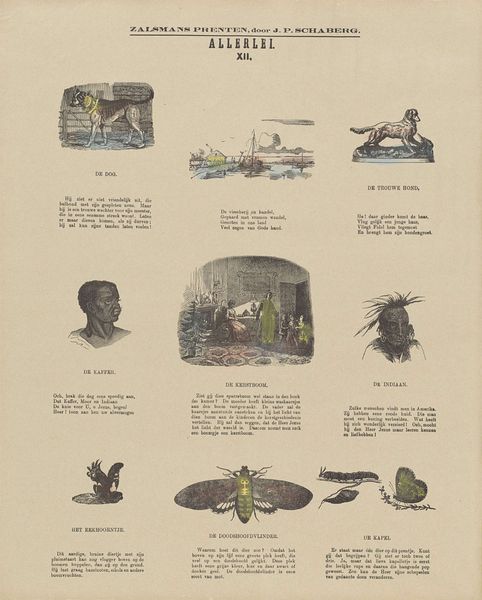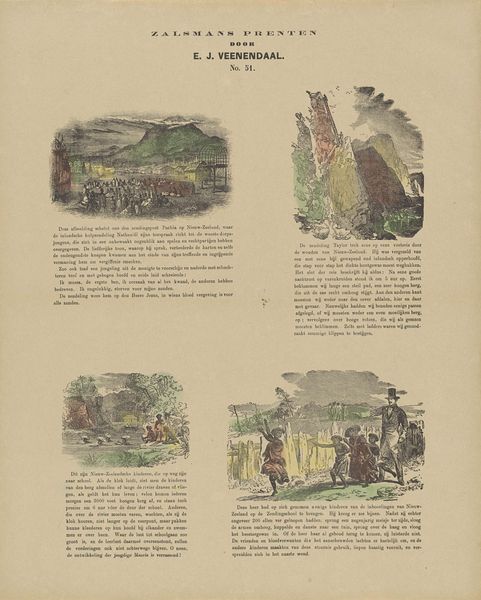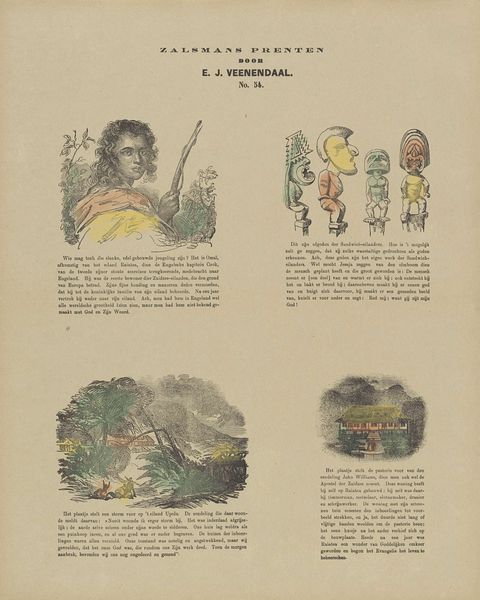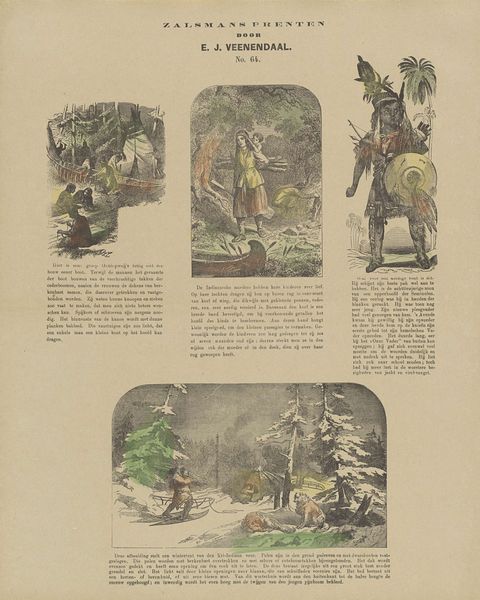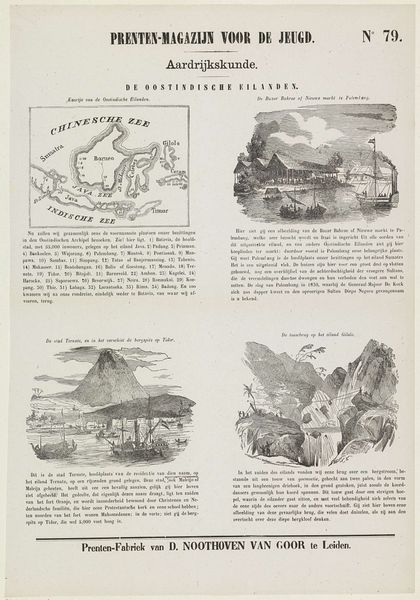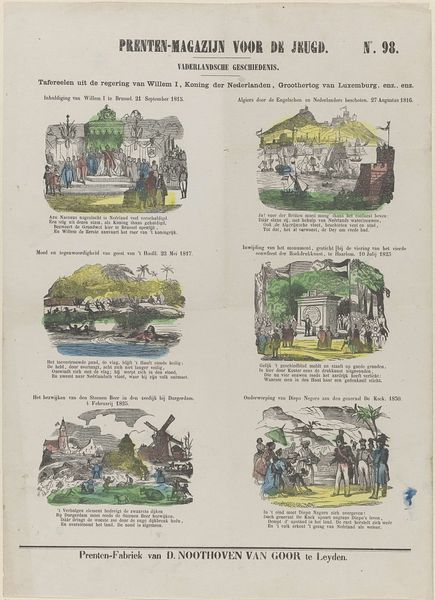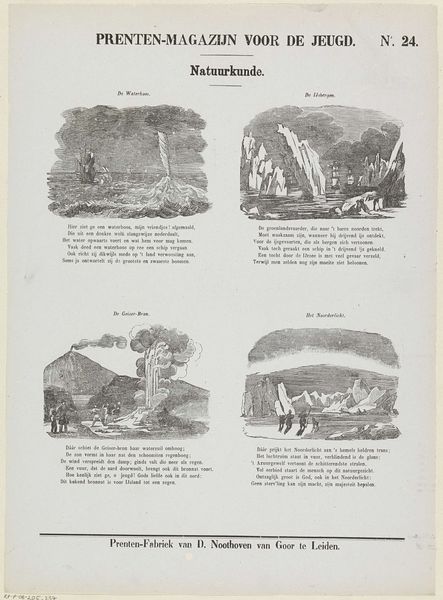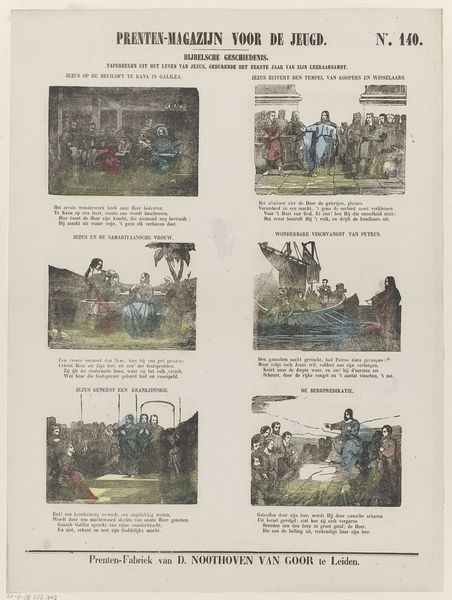
print, engraving
# print
#
watercolour illustration
#
engraving
Dimensions: height 430 mm, width 342 mm
Copyright: Rijks Museum: Open Domain
Curator: This print, "Oceanië en bewoners" from 1869-1882 by Gerhardus Philippus Zalsman, it's quite something, isn’t it? There's a strange juxtaposition of the romanticized and almost clinical. I am unsure what to make of this image, what stands out to you? Editor: Well, the material of this print seems quite crucial. It being an engraving and potentially a watercolour illustration really highlights the means of production. Do you think this impacts how these cultures of Oceania are portrayed? Curator: Absolutely. We're looking at a product intended for mass consumption. These images and texts had to be produced, disseminated, and ultimately purchased. That system implicates viewers in a specific colonial viewpoint of other cultures. What's really being "consumed" here? Is it merely the image, or also the illusion of knowledge and power? Editor: So, it's less about an authentic representation of Oceanic cultures, and more about the culture and material context that created the artwork? Curator: Exactly. Consider the labor involved. From the artist, to the engravers, to the publishers and distributors. Each stage reinforces particular economic and ideological structures. This was not neutral observation but very much a construct. Editor: So by focusing on the means of creating the artwork, we reveal the mechanisms of colonialism? Curator: Precisely. By looking at how images like these were made and distributed, we expose how power and perceptions were materially produced and consumed, impacting real lives across continents. This also means, that we can’t treat those works as neutral reflections of otherness but documents deeply enmeshed with political ambition and economic interests. Editor: That perspective gives me a fresh understanding of how to approach not just this work, but the period’s historical and cultural lens itself. Curator: Indeed. Seeing art this way helps dismantle old assumptions and opens up new avenues for investigation.
Comments
No comments
Be the first to comment and join the conversation on the ultimate creative platform.
